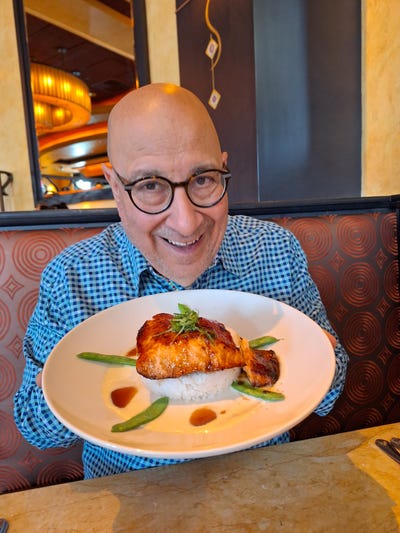A forum for contributed pieces from industry thought leaders, retailers, wholesalers and manufacturers. The views expressed are those of the authors.
How Amazon can corner Whole FoodsHow Amazon can corner Whole Foods
Whole Foods is stuck between its old identity as an organic pioneer and Amazon’s tech-driven, efficiency-focused model

It’s hard to overstate the positive effect John Mackey and his two partners had when they founded and began to develop Whole Foods Market within the world’s food sector. John is to grocery what Wolfgang Puck is to pizza, what Steve Jobs was to cell phones and Elon Musk is to the auto industry.
Like Musk, they both had some ill-advised social media posts and a noticeable percent of the consumers that use both their innovations are not supportive of their politics. That itself could be a topic for future writings. For now, I will focus on my enthusiasm for Amazon’s purchase in August 2017 that brought together two companies with many positive synergies…most of which (I would argue) have yet to be fully developed.
It’s worth noting that 30 months after that sale, the COVID-19 pandemic changed the world. There was a lot of uncertainty. To Amazon’s credit, they opened 60 stores since the initial purchase of Whole Foods, bringing the total number of stores to about 530 today. Amazon recently released their Q4 numbers and like all that came before, there isn’t much information on their grocery store business that can be analyzed. According to Statista, they did $5.4 billion in total store sales in 2024.
On a competitive side nationally, Sprouts’ impressive numbers show they are getting a lot of new customers from somewhere. Trader Joe’s and Costco are also doing well. In the heavily competitive So Cal market, Erewhon claims eye popping square footage numbers and also has a powerful social media presence. Gelson’s and Bristol Farms are having their own issues but I expect their Asia-based owners are starting to escalate their focus on improvements. In the Northeast, Wegmans continues to open impressive stores. In Texas, Whole Foods and just about everyone else continues to trail H-E-B.
From my store visits in California, Nevada, Arizona, New York, Connecticut, and Massachusetts and conversations with industry professionals in Canada and various U.S. states, I would question if the profits Whole Foods generates would be acceptable to other publicly traded grocery companies.
In Whole Foods’ growth years they were offering a higher level of products and in-store shopping experience, especially in their perishable departments. Many high end grocers have surpassed them now, especially in their stores that are older than five years. The decision to consolidate the management of all Amazon retail grocery is the latest of some good changes they have made that also include:
Consolidation of Whole Foods Market purchasing systems
Starting to mitigate the “whole paycheck” narrative
They make great progress in integrating Amazon payment systems, online pick up, returns, and other services. They can do much more
They have launched the Daily Shop, a smaller format in NYC
Reports have indicated that Amazon wants to open 30 new Whole Foods stores a year. But they don’t specify how many will be open in each banner, Daily Shop, WFM, or Fresh. Whole Foods did many things right in their growth period but they did some things very wrong. Their failure to consolidate their purchasing really hurt them…ultimately, Amazon corrected that. Another problem was their claim, starting in 2011, that they could open many more stores than was realistic.
This continued to 2016 with the claim they would have 1,200 stores by 2021. They seemed to have thought their 365 new store banner would be a major contributor to the growth. In 2016, it was apparent Whole Foods was having issues that they could not fix themselves. They made the correct call in selling and Amazon made a good decision to buy.
I don’t have a good sense of Whole Foods’ numbers, Amazon’s expectations on their profits, or their long term plans. They could be just top line focused and continue to open more stores. If they were a standalone publicly traded grocer, I would caution them not to repeat the same mistakes Whole Foods did by discounting the competition or inflating their future store count. If they are interested in raising profit margins, increasing customer engagement and elevating their image, Amazon should up their efforts especially in their perishable and prepared food departments. I would suggest they consider the following for the 175 of their existing stores (and perhaps some new stores) as a good place to start in terms of strategy:
Use their great locations and better integrate the services of Amazon to create what’s next for consumer food choices. That creation must be well beyond the standard grocery experience of pushing a cart through the aisles. They could also offer a number of VIP services, AI powered customer specific menu plans
In my previous posts, I have suggested that grocers should continue to take market share from food service. The combined abilities of Amazon and Whole Foods gives them an advantage on selection, ordering, pick up, and in-store dining in the fast casual and polished dinnerhouse sector. They also hold an advantage in grocery delivery. If they can commit to a higher level of product selection and service, they could get much more customer engagement.
Right now, Whole Foods is stuck between its old identity as an organic pioneer and Amazon’s tech-driven, efficiency-focused model. The opportunity for Amazon with Whole Foods is to double down on premium experiences, lean into Amazon’s convenience and delivery strengths, and become a true innovator in food. Amazon has the tools to make Whole Foods the grocery store of the future—but they need the will to do so sooner than later if increased profits and industry dominance are a priority. As a long time Amazon shareholder, I sure hope they do.
About the Author
You May Also Like






